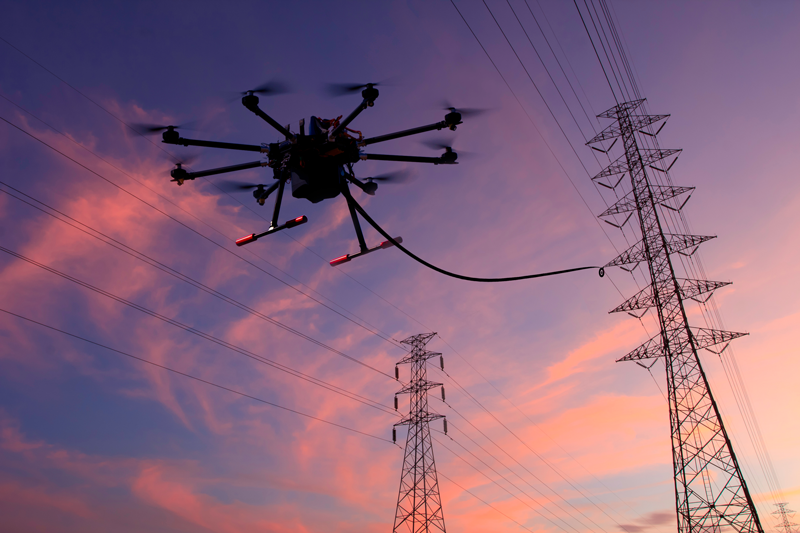Utility companies are always looking for more cost-efficient ways to deliver energy to their customers. When it comes to fixing, inspecting, and maintaining the energy grid, one answer could be drones.
The drone market within the energy sector is expected to reach $178 million by 2030. Drones are proving helpful in inspecting, monitoring, and maintaining critical infrastructure.
According to the “Drones In Energy Industry Report 2022,” the worldwide commercial drone market will hit some $41.3 billion by 2026, and energy companies will make up nearly 15% of that — approximately $6 billion worth.
However, drone integration has some challenges, such as registering with the FAA and cost.
While a drone equipped for utility support can cost $250,000, that’s still a fraction of the cost for comparable measures.
“With drones, utility companies can quickly assess damage, identify affected areas, and plan restoration efforts,” says Vernon Shurtz, Project Manager, Association for Uncrewed Vehicle Systems International. “The real-time data provided by the drone allows for swift decision-making and efficient deployment of resources, leading to faster restoration times, and improved customer service.”

How drones can save utility companies money
Drones can quickly cover a larger utility grid and at a lower cost than helicopters or people. If there’s an issue with lines and customers are without power, every second spent identifying and fixing the problem wastes money.
Using drones in infrastructure inspection in the energy sector can result in up to a 50% reduction in cost compared to traditional methods, according to SkyQuest.
When the grid does have power, many places that require inspection can be dangerous to reach for a human worker. Drones can increase safety and reduce liability and costs associated with a worker getting injured on the job.
Other more nuanced uses for drones include tasks such as photography so utility companies and state governments can make decisions.
“In southern California, they have a lot of fires in the summer related to energy usage,” says Shurtz. “California relies on several other states to supply it with power, so power lines traverse the desert to feed California with power. To avoid these fires, each year, the utility companies contract drone companies to take pictures of all the lines, insulators, etc. Then inspectors go through all the photography, identify any items that require attention, and send someone out there. The labor power required to perform in-person inspections makes the endeavor cost-prohibitive.”

How utility companies can use data to measure their ROI for the drones
When thinking about drone operations, utility companies will want to analyze time saved, safety, and costs to measure their ROI.
When analyzing if a drone will yield a positive ROI for the company, utilities will want to analyze their data. For example, if they have a solar field that is 100 acres, find out how long it typically takes for human workers or a helicopter to inspect it. Then, compare the time a drone takes to complete the same work. You can then compare the cost per hour in each investment.
Forbes contributor Brian Pitre writes, “Much of the future of drones may seem like sci-fi but it’s much closer than you may think. Business leaders need to stay abreast of these changes and see how they may impact your business.”
- 87% of Utilities Have Experienced at Least One Data Breach in Last Three Years - February 5, 2024
- Can Drones Lower Your Next Utility Bill? - January 10, 2024
- Onshore Wind Farms Are The Next Big Thing In Renewable Energy - December 6, 2023



